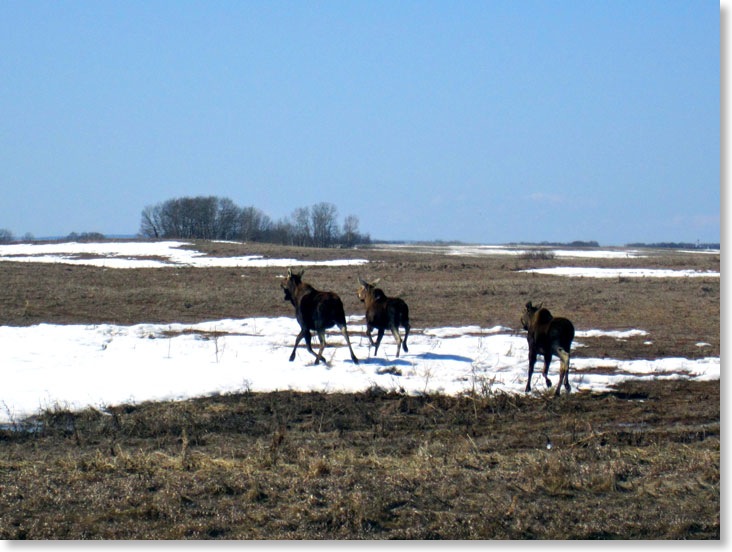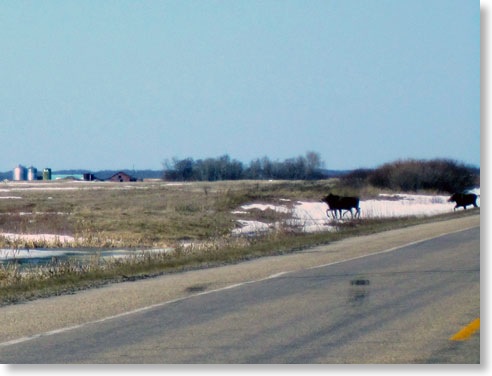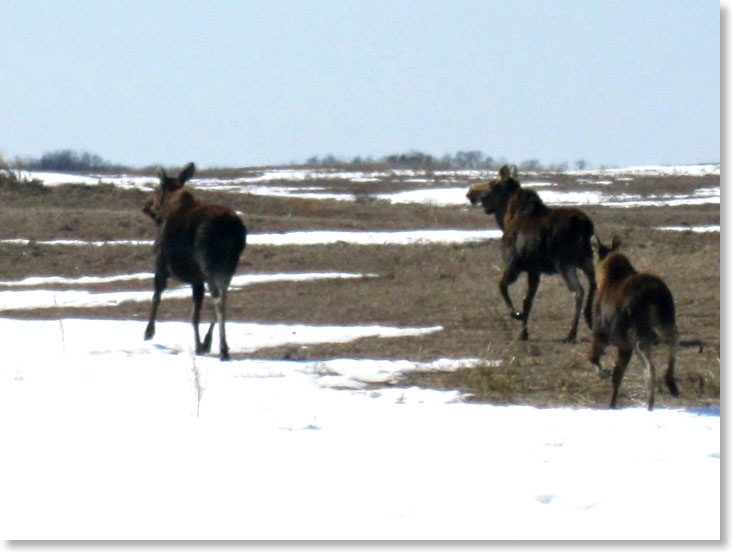
Moose on the plains
FTLComm - Raymore - Sunday, April 17, 2011
It is something everyone knows, moose live in forested areas in the Northern Hemisphere and they prefer swamps. Yet more and more we are seeing these, the biggest species of the deer family in all parts of Saskatchewan. These pictures were taken in the middle of the afternoon on Saskatchewan's prairies well south of the boreal parkland forests. It is not unusual to see them north of Swift Current, which in most years meets the definition of being a desert.

The animal we call "moose" is called an "elk" in Europe as they are found in significant numbers in Scandinavian countries, there are so many that the Swedes actually harvest up to 150,000 every year. They were extinct in the British Isles since Roman times and in low numbers in many other parts of Northern Europe but are steadily increasing in numbers just as they are in North America where they are doing a nice job of making a big comeback in the New England states while they were not indigenous to Newfoundland when Europeans came on the scene four were introduced to the island in 1904 and there are a whopping 150,000 of them with the government setting out a programme to cull their large number.
I remember as a teenager that there were 75 moose living in Moose Mountain Provincial Park in the early 1960s. That seemed like a nice number but I understand that total there are considerably more although I was unable to find a source detailing the actual Saskatchewan population. However, on February 24 this year CBC reported two strolling across Wascana Lake within the city. One of those died when conservation officers attempted to move them out of the city.
There is one simple explanation as to the movement of moose across Saskatchewan and that is, why not? Saskatchewan is form the most part entirely empty, its population of a million people mostly live in Regina, Saskatoon and a few other large centres, the countryside is empty. Farms are big and getting bigger so there are very few rural people. Moose and other wild life are merely taking advantage of human depopulation and move to urban centres.
Whatever, the case watch out for moose, they are not dangerous to you on foot in most cases but in a car they are deadly. Both moose and wapiti do not look toward approaching cars when crossing roads at night and therefore unlike deer there is no reflective eye staring your way. Instead both tall animals will amble onto a highway and because of their dark colour they are very hard to see. Crashing into a moose or wapiti can be fatal to occupants of a car in a collision with these big animals.
Read more about moose in Wikipedia.
